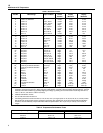
16
Multimeter with Temperature
4
Disassembly and Reassembly
Referring to Figure 1, disassemble the Meter as follows. A
Phillips-head screwdriver and small flat-blade screwdriver
are required.
1. Remove the test leads and set the rotary knob to OFF.
2. Remove the Phillips-head screws from the case bottom.
3. Separate the case top from the case bottom.
4. To replace the battery: lift the battery from the case
bottom and insert a new 9V battery. Be sure the positive
and negative battery posts are oriented correctly.
5. To remove the pca: insert a small, flat-blade
screwdriver between the edge of the case top and the
pca where shown in Figure 2. Gently unsnap a side of
the case top from the pca. Repeat on the other side of
the pca. Unsnap the case from the top of the pca last.
Lift the pca from the case top by its edges. If the
elastomeric contact strips for the switch assembly and
LCD are stuck to the pca, remove them without touching
the conductive edges.
Note
Before reinserting the pca, make sure that the
rotary knob is in the OFF position.
7. To reinsert the pca: Place the pca over the four screw
posts in the case top, then press gently on the center of
the pca while using the small flat-edge screwdriver to
shoehorn the pca under the snap on a side of the case
top. Repeat on the other side and the top.
8. To remove the switch support, use a small, flat-blade
screwdriver to gently unsnap the sides and top of the
switch support from the snaps shown in Figure 2.
9. The LCD, switch assembly, and elastomeric contact
strips for the LCD and switch assembly are accessible
and can be replaced as needed. Do not allow the LCD
to get wet. Before installing a new LCD, make sure that
all connector contact points are clean.
Caution
Do not touch the conductive edges of the
elastomeric strips or the contacts on the switch
assembly. If they are contaminated, clean them
with isopropyl alcohol.
9. Reassembling the Meter is the reverse of disassembling
it. After the Meter is reassembled, execute the
Performance Test to confirm that the Meter is working
properly.
Cleaning
W Warning
To avoid electrical shock, remove test leads
and any input signals before cleaning.
To clean the case, wipe it with a cloth lightly dampened with
water and a mild detergent. Do not use abrasives, solvents,
or alcohol.
Recommended Test Equipment
A list of recommended equipment for the performance test
and calibration adjustment procedure is shown in Table 2.
Table 2. Recommended Equipment
Equipment Minimum
Specification
Recommended
Model
AC/DC Calibrator DC Voltage: 0 to
600 V
Accuracy: ±0.25%
AC Voltage: 0 to
600 V
Accuracy: ±0.5%
Frequency: 50 to
400 Hz
5700A, or 5500A
Decade Resistor Resistance: 1.0 to
40 MΩ
Accuracy: ±0.25%
Fluke 5500A
Decade
Capacitor
Capacitance: 0 to
1.000 µF
Accuracy: ±0.5%
Fluke 5500A
Thermocouple
Wire K-Type
--- Fluke 80 PK-1
Temperature
Probe
Accuracy: Certified
to ±0.2°C ambient
Fluke 80T-150U
Mercury
Thermometer
0.02°C resolution
0.05°F resolution
Princo Model ASTM
56C
Princo Model ASTM
56F
Flask with cap --- Dewar Flask














